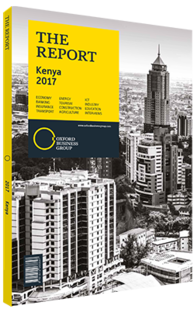Mugo Kibati, Chairman, Lake Turkana Wind Power: Interview

Interview: Mugo Kibati
What are the main challenges facing large-scale energy projects in Kenya?
MUGO KIBATI: A typical challenge is bankability, as projects must be viable enough for equity investors, or else investors will not touch them. Energy projects are also very large and complex, both from the aspect of technical expertise as well as scale. Additionally, many projects are in far-flung locations with limited infrastructure and costly access. There is also the complexity that comes with structuring large projects financially and it can take several years to get this in order. Furthermore, projects must be connected to the grid, which requires coordination with the national body as well. Finally, there is the additional challenge of using funding sources that are not the cheapest, and this can make it more difficult for them to come in below the Energy Regulatory Commission’s tariff structure.
How would you rate Kenya globally or regionally for major power projects?
KIBATI: From a global comparison, Africa in general has work to do to make these projects more attractive. Within the region, however, Kenya is one of the top countries when it comes to attractiveness for independent power producers (IPPs) when it comes to engaging technical designs, securing government support and raising investment. For this reason, Kenya should see more private players in energy. That said, there is still room for improvement, and room to make bankability easier to get to. Skills should be readily accessible, as should making financial arrangements.
What incentives could be implemented to attract further interest from IPPs?
KIBATI: Although short term incentives may sweeten the deal, long-term investors are more interested in stability. There are some countries in the region offering more attractive and short-term administrative incentives such as cheap land leases, but the fundamental decision for investors is where their investment is safest. These incentives are catalytic, but they are not the core driver of investment. Investors are more concerned about expropriation, predatory taxation, property rights issues, repatriation of profits, and whether or not there is a probable recourse for these through the court system. Kenya’s long history of foreign investment is not dependent on whether a permit takes two days or three weeks, it is instead due to the knowledge that, culturally, Kenya is not anti-foreigner.
What are the primary obstacles limiting the role of the private sector in power generation?
KIBATI: We have a pretty good tariff structure by international standards. One of the largest obstacles for private investors is the availability of accompanying public infrastructure. Private players must have somewhere to offload their generation onto the grid. There are many areas that have great capacity for generation, but have limited access to transmission systems. It is often difficult for public infrastructure to keep up with the pace of private generators. At the end of the day, private players can only do so much, and this needs to be reciprocated by the public sector.
How would you rate the availability of transmission infrastructure?
KIBATI: It is quite clear that we have an archaic and insufficient transmission system. A significant amount of work has started to renew and stabilise the transmission lines that already exist to make sure they are strong and sturdy for the new sources of generation. There is also a large gap in last mile connectivity, and this goes beyond just the issue of power.
Kenyans often are not concentrated in just one population centre, and this diffusion has the potential to make last-mile connectivity difficult for all types of things, including pipes, roads and electricity. Supplemental solutions such as off-grid will be necessary.
You have reached the limit of premium articles you can view for free.
Choose from the options below to purchase print or digital editions of our Reports. You can also purchase a website subscription giving you unlimited access to all of our Reports online for 12 months.
If you have already purchased this Report or have a website subscription, please login to continue.

